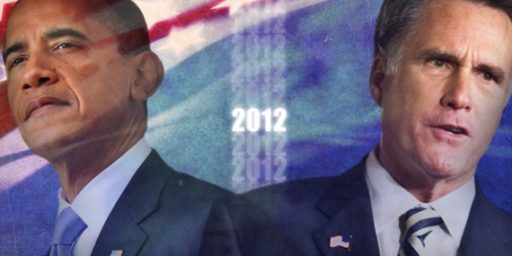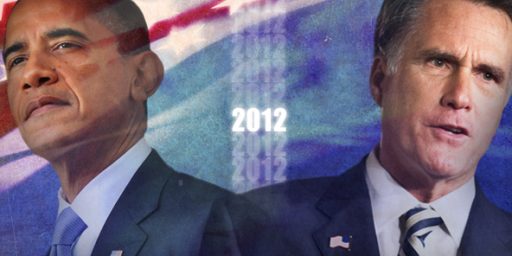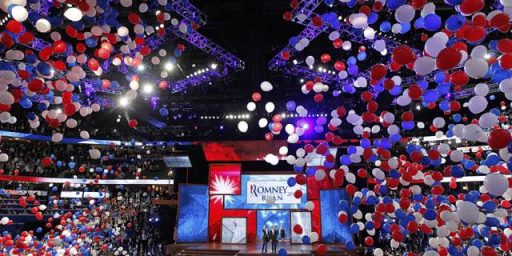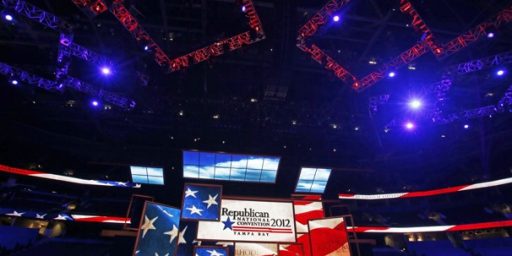Another Ohio Poll Gives Obama a Big Lead
Via the Columbus Dispatch:
A new Dispatch Poll shows him trailing President Barack Obama in bellwether Ohio by 9 points, 51 percent to 42 percent.
A surge of Democratic support for Obama has transformed the race since the first Dispatch Poll had the two dead-even at 45 percent just before the Republican National Convention in late August.
The survey is the fifth major poll — from The Washington Post to Fox News — of Ohio voters in a week to show the president ahead by 5 to 10 points.
Also in regards to the Dispatch poll:
The president is ahead among independent voters by 3 points and is attracting slightly more GOP support than Romney is getting from Democrats.
[…]
Five percent of Ohio voters said they remain undecided, while the other five candidates on the ballot (who were not included in the first Dispatch Poll) are dividing 3percent.
Obama is strongly benefitting from Democrats who have come home since the political conventions and the revelation of Romney’s secretly recorded remarks dismissing 47 percent of Americans.
The Dispatch poll is mail-based, which I must confess I find less trustworthy that phone-based polling:
The mail poll of 1,662 randomly selected likely Ohio voters Sept. 19 through yesterday has a margin of sampling error of plus or minus 2.2 percentage points.
Still, it does fit the general trend we are seeing with the other polling in the state.






The last time I heard of a mail-based poll was when a defunct magazine called The Literary Digest did a mail poll of its subscribers for the 1936 Election and declared that Alf Landon would beat FDR. FDR won that election with 60.8% of the popular vote and 523 Electoral Votes.
@Doug Mataconis: Yep–that one comes to mind. The difference is that this one is a random sample via mail, while the Literary Digest poll was not.
Steven,
True, I must admit though that I was unaware that pollsters used this method still. It strikes me that, random or not, you’d still have some serious demographic issues. Not to mention the fact that I’d love to know what their actual response rate was. How many questionnaires did they send out and how many did they get back? Response rate is an issue that phone pollsters deal with all the time, it strikes me that it would be a bigger issue with what is essentially a piece of junk mail showing up in people’s mail boxes.
@Doug Mataconis: It strikes me as unusual as well. I wonder how they conduct the sample. I suppose the junk mail thing is not that much different than hangups for phone pollsters.
Just an anecdote, but the only poll I have responded to in recent years was a mail poll (although it was a poll about brand preferences rather than politics). The reason I responded to that particular one was that there were two $1 bills included in the envelope and I appreciated the fact they recognized a need to pay me for the time spent filling out their poll.
@Stormy Dragon:
I have gotten a similar survey but only with one $1 bill. Glad to know that the going rate is $2 now. 😉
@Doug Mataconis: “The last time I heard of a mail-based poll was when a defunct magazine called The Literary Digest did a mail poll of its subscribers for the 1936 Election and declared that Alf Landon would beat FDR. FDR won that election with 60.8% of the popular vote and 523 Electoral Votes. ”
I had heard that that was a telephone poll, which in 1936 had considerable bias.
@Barry:
The Literary Digest Poll was a straw poll conducted by mail. They sent out 10,000,000 surveys, getting the names from their own subscriber list as well as lists of registered automobile owners and lists of people who had a telephone.
Of the 10,000,000 sent they received 2,400,000 completed surveys back, a 24% response rate which was pretty low and likely made the poll even more unrepresentative of the population as a whole
Funny thing about that poll;
http://www.examiner.com/article/skewed-columbus-dispatch-poll-of-ohio-shows-padded-obama-lead
@Doug Mataconis: “The Literary Digest Poll was a straw poll conducted by mail. They sent out 10,000,000 surveys, getting the names from their own subscriber list as well as lists of registered automobile owners and lists of people who had a telephone.”
Thanks. Those sampling frames would explain a lot. All in all, they should have been rather light on people in the lower half of the economy.